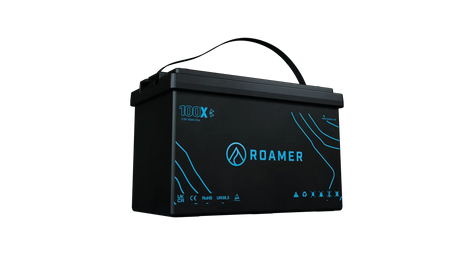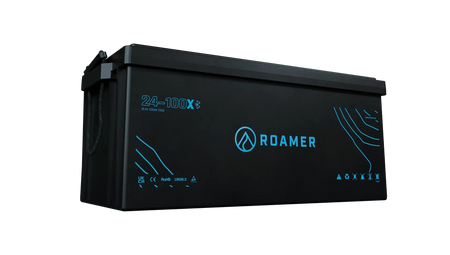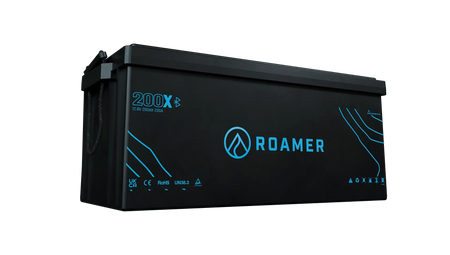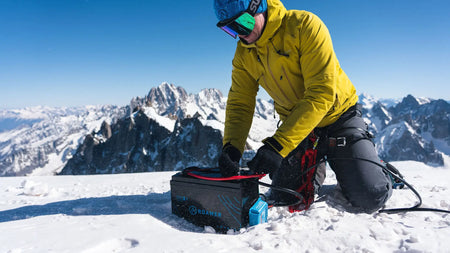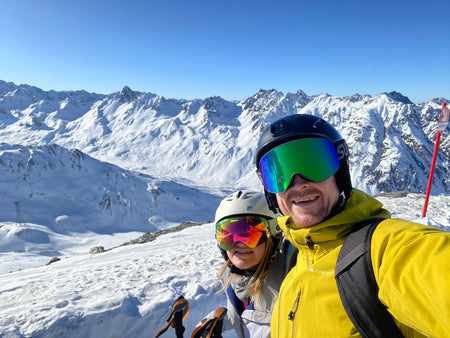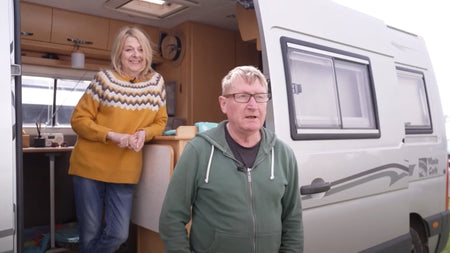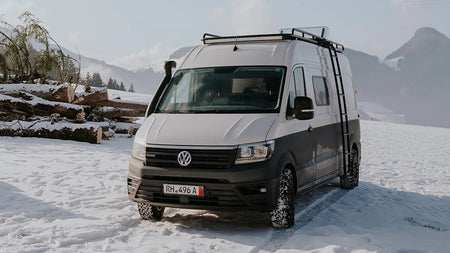
A guide to winterising your campervan & motorhome
It’s that time of year again. With low temperatures looming and harsh conditions incoming, campervan and motorhome owners are battening down the hatches to protect their pride and joy from Mother Nature’s not so friendly side.
Before Winter fully sets in, it's important that your campervan and motorhome are Winter ready! Whether you are choosing to take short weekend trips away in the UK, or long snowboarding holidays in the alps, you need to be prepared. A winterised campervan and motorhome will be fully kitted out with everything you need to stay safe, warm and comfortable in the depths of winter.
This guide provides information on Winter tyres, snow chains, battery care, four wheel drive, heaters, water tanks, insulation, lights as well as tips for driving and parking up in snowy conditions. We also cover putting your motorhome or campervan into hibernation for the Winter - tips on how to store it and important measures to ensure it doesn't get damaged from damp and freezing temperatures.

First off, what is a winterised campervan and motorhome?
The Roamer definition of a winterised campervan and motorhome is that your vehicle has been modified to keep you safe, warm and comfortable in extreme winter conditions. It may sound obvious but depending on where you plan to be, there is a big difference between a winter in Cornwall and a ski or snowboard holiday in the Alps. And you don’t want to be under prepared!
Some campervans and motorhomes are simply underequipped to cope with temperatures that can drop to minus 20. Others are downright dangerous. The truth is, kitting out a properly winterised campervan and motorhome requires a substantial investment. Adventure is one of the pillar stones of Roamer and our own campervans are all 4WD winterised campervans so when we say we’re ready for winter, we mean it.
Winter tyres and snow chains
We cannot stress enough just how important it is to have genuine winter tyres on your winterised campervan and motorhome. Or any vehicle for that matter! And not those ‘all season’ tyres, we mean those that carry the ‘3 Peak Mountain SnowFlake symbol’ (3PMSF).
3PMSF is a universal standard that verifies tyre performance in the cold, snow and ice. This badge of honour is only applied if the tyre has been proven to provide dramatically improved performance in wintry conditions through rigorous testing. Tyres marked M+S (Mud and Snow) will be better suited to snowy conditions than summer tyres but there isn’t a certified testing process like there is with the 3PMSF. It’s up to the manufacturer to decide what counts as M+S and what doesn’t. And new rules for France introduced this year state that M+S labelling alone is not enough to count as winter tyres (needs to have 3PMSF to qualify).
For 99% of winter driving, good quality winter tyres give you all the grip and power you need but I'd always recommend carrying a set of chains anyway. Its unlikely you’ll ever need the chain but it’s good to know they’re there just in case and some countries you visit may require you to carry them by law.

Four wheel drive
Four wheel drive isn’t as essential for safety as you might think. The additional power in snow, ice and slush can help get you out of trouble but it only affects straight line traction, it has no impact on steering or braking distances. Where 4WD comes into play is getting you moving in the first place. Try driving up a steep icy track to your campsite or pulling out of a snowy car park and you’ll really notice the difference.
There are various flavours of four wheel drive. Ranging from the real off roaders with low gear ratios and multiple diff locks to the simple All Wheel Drive systems found on many modern cars. Volkswagen’s 4Motion system is a good middle ground. It gives you the power and control of 4WD when you need it without requiring any special driving skills.
A quality diesel heater
It goes without saying that a winterised campervan or motorhome will need a decent heater. But what type of heater is best? Electric heating is not an option off grid as they consume huge amounts of energy, more than even the biggest Roamer battery can deliver! It would only work at a campsite with electric hookup and even then it would be expensive. So that leaves gas (LPG) or diesel. Most motorhomes and campervans fit LPG heaters with refillable bottles in a gas locker.
Our own van is fitted with a diesel heater (we use an Eberspacher S2 but the Truma Combi D6E is another very popular option that can also supply hot water). Installed correctly, a good quality diesel heater is quiet, efficient and safe to run unattended 24/7. It is also a dry heat that prevents condensation build up. Most importantly, they draw fuel from the main vehicle diesel tank so you never need to worry about running out of fuel! Operating the Eberspacher heater is really easy. The controller allows you to set a target temperature and duration on screen with a couple of clicks. The built in altimeter also adjusts the burner cycle automatically depending on the altitude, making it safe up to 3000m.
Note that in extreme cold temperatures, its possible for diesel to freeze (technically it gels up rather than freezing solid but the end result is the same). You should therefore keep the exposed part of the diesel fuel pipe to your heater as short as possible. Another option we've used in the past is to T off from the diesel return pipe from the engine, instead of drawing from the fuel tank directly. This ensures the fuel is warmed up before it gets to the heater. Also make sure you fill up with diesel when you get to your destination - the fuel in the Alps has additives in to prevent it from freezing, its much more suitable than the stuff you buy at low altitudes.

Internal water tanks
Water freezes in winter. Duh. Most campervans use external tanks which saves space but makes them completely inappropriate for winter camping. It’s possible to lag external water tanks and some even come with heating elements for ‘frost protection’. This will help of course, but it’s still not enough to cope with the temperatures you’ll get at altitude in winter. Beside, the pipes are usually the first part of a the water system to freeze. In a system like this, you’d still need to drain the pipes every time you run the tap or it’ll block up the first time the temperature drops.
A properly winterised campervan or motorhome will have internal fresh water tanks and lagging on all pipes. Even then its possible for pipes to freeze occasionally. You can go one step further and include a backup drinking water supply with separate pipes.
Insulation
Another no brainer, but something which is usually under-installed in most motorhomes and campervan conversions. Stick a heater and some blinds on the windows, what you can’t see won’t hurt you. Except, when it’s minus 20 outside and blowing a gale.
Winterised campervans have thick insulation under the floor and on the ceiling, not just behind the wall panels. Our preferred layout separates the cold cab area from the living space, and we have fitted double glazed polycarbonate windows and thick insulated window covers.

Storing your campervan and motorhome for Winter
If you're not campervan skiing and simply want to store your campervan or motorhome away for the Winter months, it is crucial you safeguard it from cold and damp conditions. I'd recommend making a tick list of jobs to do on your van, everyone has a different set up so it is going to be a personal thing. Here's a few general suggestions however...
Drain your water system
This is very important as frozen pipes can crack, or blow out push fit connections. This happened to us before, I forgot to drain the system and on the morning we were due to set off on a ski trip, I warmed up the van and discovered a cracked brass tap fitting that proceeded to leak water everywhere.
Vehicle maintenance
Make sure you regularly run your campervan/motorhome over the winter period if you can, to keep things from seizing up. While your lithium leisure battery doesn't require any maintenance (just shut it down as per our storage guidance), you will need to keep the starter battery topped up. A plug in trickle charger or small solar panel will help ensure your starter battery stays in perfect health.
Good Ventilation
If you can, its a good idea to crack a window or roof vent to help circulate air and prevent damp. This should be enough to keep things dry inside but you should also check inside regularly for damp patches and leaks from the roof.
Winterise your leisure battery
Storing your leisure battery for the winter is another important process to follow. We recommend charging the battery up to around 80% and then shutting it down completely. The self discharge of a lithium battery is very small, so this ensures you still have plenty left when you come back to it. If you're using a SMART4 battery this is as simple as powering it off using the switch on the case, for other batteries you can use an external battery isolator switch. Don't forget to isolate your solar too! You should never leave solar connected without a battery.

Common Winter Travel Questions
What is it like to drive a campervan or motorhome in snow?
Driving a 3.5 Tonne vehicle on icy mountain roads may sound like a daunting prospect. In reality most alpine roads are exceptionally well managed. If you do experience issues in snow, it will usually be in a car park or in a campsite and 4WD and snow chains will get you out of these 99% of situations. If you get really stuck then the breakdown cover is there if you need it.
How to keep safe driving in Wintery conditions?
If you're going to camp in extreme conditions then its important to know you'll be safe even when things break or go wrong. It is important to include an emergency box in every campervan or motorhome. Inside include snow chains, a tow rope, various breakdown tools, a shovel, a backup electric heater and a portable gas stove. Comprehensive breakdown is essential.
How to stay warm and dry in a winterised campervan or motorhome?
Staying warm is surprisingly easy. A good diesel heater can provide a 30 degree C swing between inside and outside. A well insulated van or motorhome will also heat up from freezing to room temperature in under an hour. We recommend leaving the heating on a low setting while you're out anyway. It's safe to do so and means you can warm up quicker.
In the colder months (January to March) staying dry isn't really a concern, it's cold enough for snow to just brush off. At the start and end of the season however, you've got rain and slush to deal with. Staying in a campervan would be a pretty miserable experience if you were unable to dry off!

Roamer Batteries in Winter
Our SMART and HOME series batteries can be used for even the harshest winter trips, as long as they're installed in the heated living space of the vehicle. These batteries can be discharged at high power down to minus 20 degrees and also have low temperature charge protection built in to prevent potential damage from charging at sub zero temperatures. We use 2 HOME batteries in our current camper, and had SMART batteries in our previous two vans. The huge capacity and power outputs of these batteries makes them the best option for our long, off-grid ski trips.
If you are planning something truly extreme or will be installing in an outside locker that will regularly drop below zero then our Xtreme lithium batteries are the ultimate option to keep you safe, warm and prepared for all conditions. Add one of these to your winter set up and it will work perfectly in any natural temperature anywhere on earth, both hot and cold. Xtreme batteries use a different type of LiFePO4 cell that can be charged at temperatures down to minus 30C without any cell heaters.
